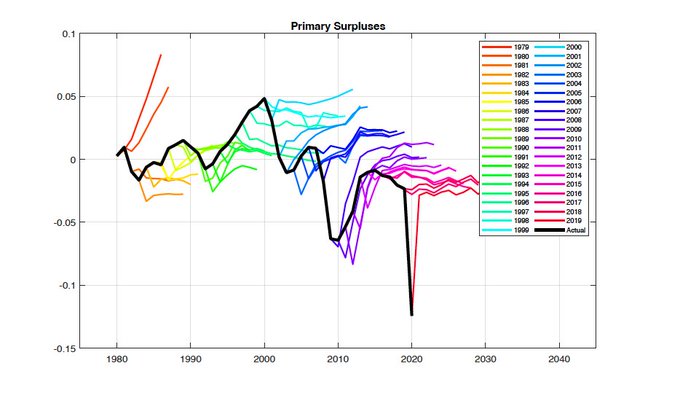Revisions to GDP numbers are normal. Today's just happens to coincide well with what we're doing in lecture.
The rough draft of these numbers came out a month ago, and this is the revision. Here's the press release.
You have to scroll down a bit, but nominal GDP growth was revised upwards from 6.5%/yr to 6.7%/yr annualized. There you'll also see that the "price index for gross domestic purchases" rose from 3.2%/yr instead of 3.6%/yr. This is all from the BEA, so the price index is annualized too, unlike the CPI.
Now, going back to the top, real GDP growth was revised downwards from 2.9%/yr to 2.7%/yr annualized.
But if you look closely, the numbers don't match up. Working through this is a good exercise.
The way that you combine the price and real GDP information to get the nominal GDP information has to check. The arithmetic is that you take the product of the gross rates and subtract one, as in:
(1+.032)(1+.029) - 1 = .062 (for the advance estimates)
(1+.036)(1+.027) - 1 = .064 (for the second estimates)
Neither of those check.
What's going on here is a combination of two things. First off, the data from the announcement is not the right one to use. Go figure. Secondly, annualization makes a difference.
To get the right data, you need to dig a bit. Go from the BEA.gov home page, click "Data", then "By Topic", then Gross Domestic Product. Click "Tables Only" towards the bottom of the page (an Excel file will download). Nominal GDP is in the top middle of Table 3. Real GDP is towards the top right.
Nominal GDP (in billions of dollars per year) went from 25,723.7 to 26,145.0. Divide the latter by the former to get the gross rate of NDGP growth: 1.01637%/qtr. To annualize, raise that to the 4th power and get 1.0671. Subtract 1 to get the net rate, and express as the rate 6.71%/yr. Check.
You can do the same thing for real GDP (in billions of 2012 dollars). It went from 20,054.7 to 20,187.5. The gross rate is 1.00662, the annualized gross rate is 2.68%/yr. Check.
But where does the 3.9%/yr inflation rate come from that balances those two? Above, I noted there are 2 issues, but let's do the annualization first. Generally, the gross rates of real GDP growth and price growth have to be multiplied (sort of like compounding). BUT, you need to do this with the original quarterly data, and then annualize that, rather than do it from the already annualized rates. So, the 1.00662%/qtr for real GDP has to be multiplied by an unknown (1+x)%/qtr, to get 1.01637%/qtr. Just divide those two to get 1.00968. Compound that to get 1.0393%/yr. Subtract 1 to get 3.9%/yr. Check.
Now back to the first question: where's the index that actually went up by 3.9%/yr? This requires more digging. It's called the implicit price deflator, Put that into the search bar at the top of the BEA home page. Look for a link titled "What Is an Implicit Price Deflator and Where Can I Find the GDP IPD?" In there you'll find a link to Table 1.1.9, with the data you want at the top right.
The index went up from 128.269 to 129.511 (you could think of that as the dollar prices now of stuff that cost $100 in 2012). That's a gross rate of 1.00968%/qtr. Compound that to get 1.0393%/yr, and from that the net rate of 3.9%/yr. Check.
Don't ask me why they don't put that one in the news release. A cynical person would say it's because they had something that sounded similar (the price index for gross domestic purchases) with a smaller/better number.
A casual way of thinking about this is that while your paycheck may have gone up last quarter, over half of that was needed to cover price increases.
***
In all of this, note that I don't have the advance estimate of the implicit price deflator. Couldn't find it. It is possible to find historical advance estimates, but it's not easy, and it wasn't worth more than a minute or two of trying.
But I can figure it out. Going back to the gross rates from the advance estimate — 1.065%/yr for NGDP and 1.029%/yr for real GDP, I can divide the former by the latter to get 1.035%/yr.
So the revision said the NGDP growth rate went up by 0.2%/yr, and the RGDP growth rate went down by 0.2%/yr, and the difference (subject to rounding and compounding) is the 0.4%/yr increase in the implicit price deflator. In short, they initially underestimated inflation, and that made real GDP growth look higher than it really was.

